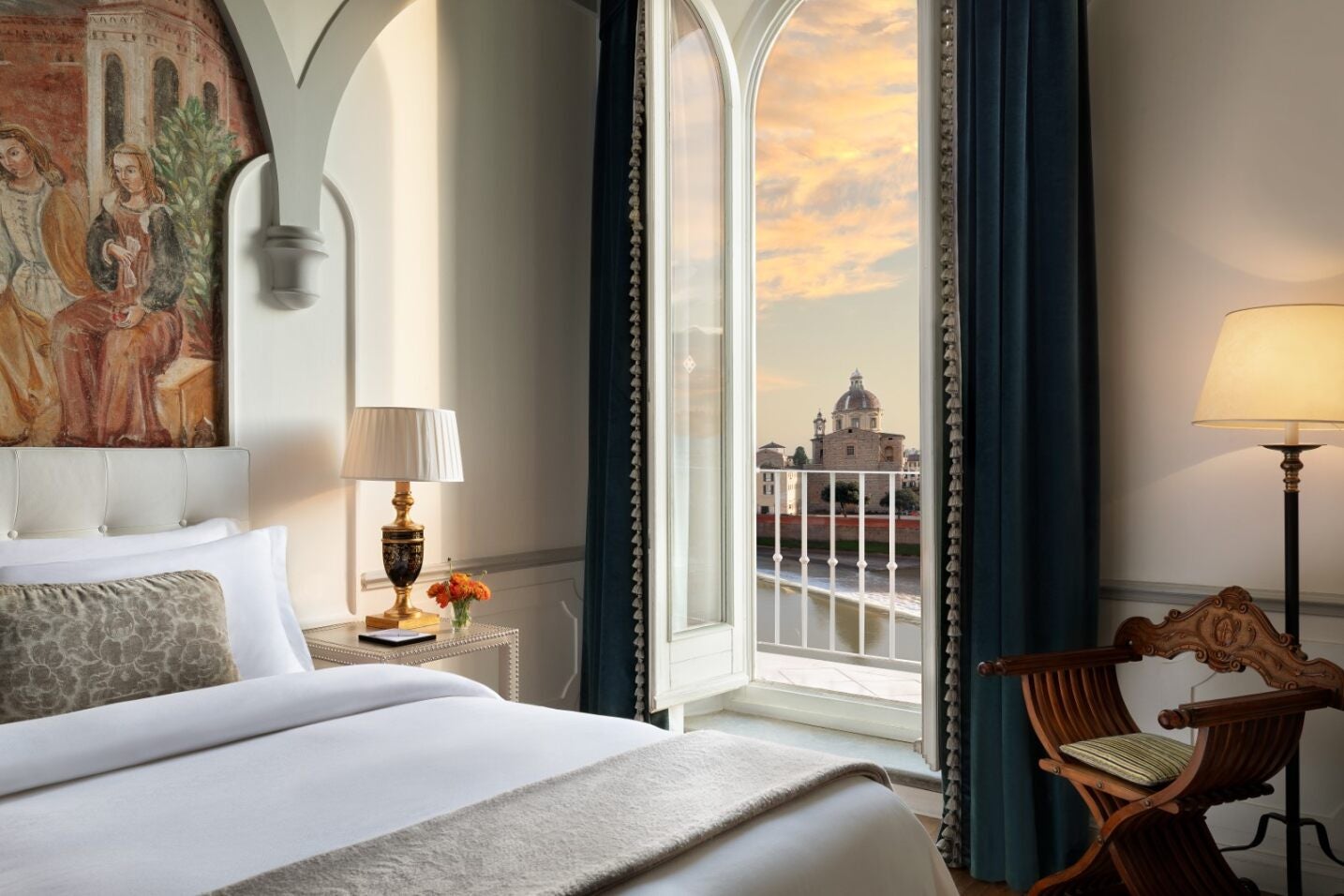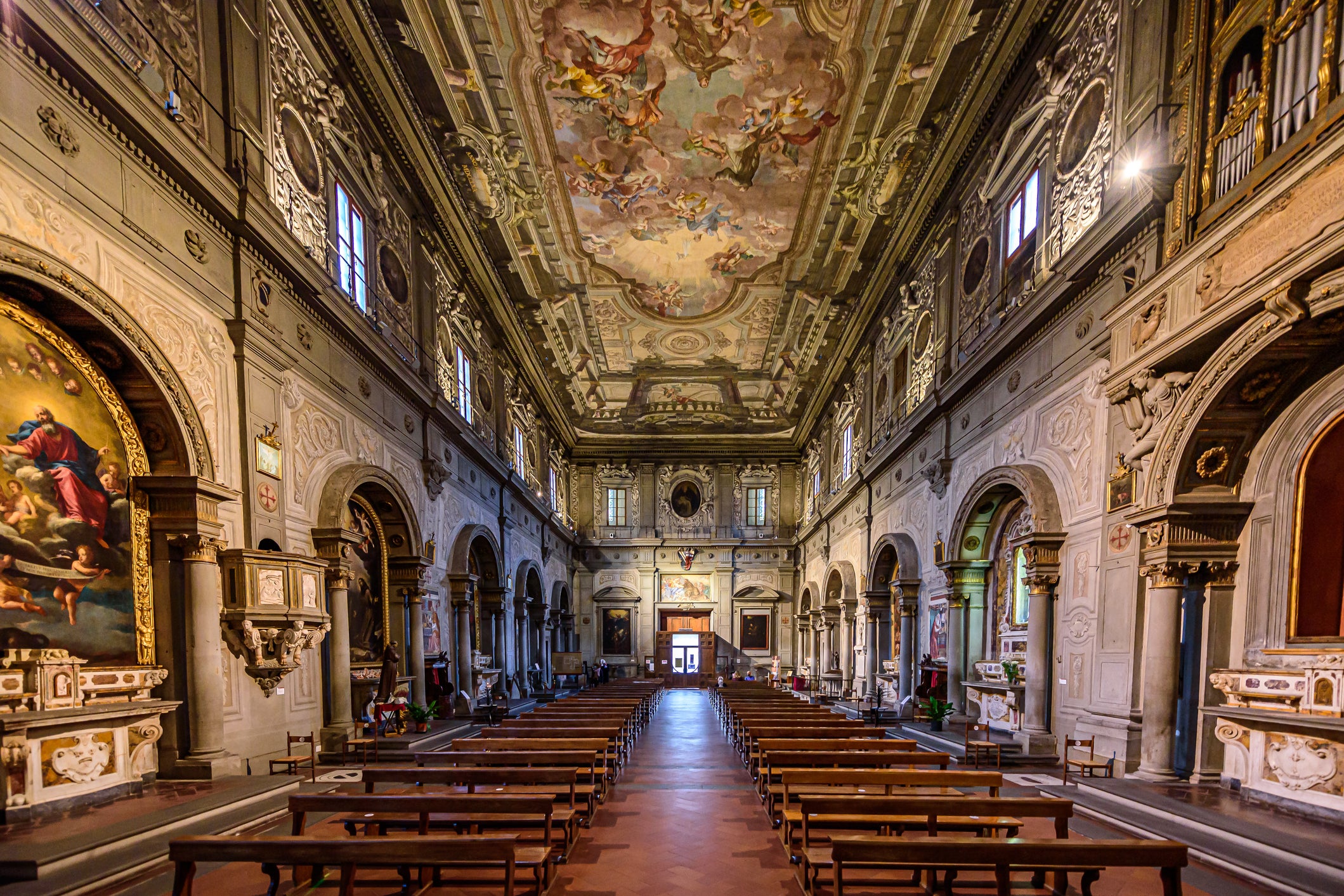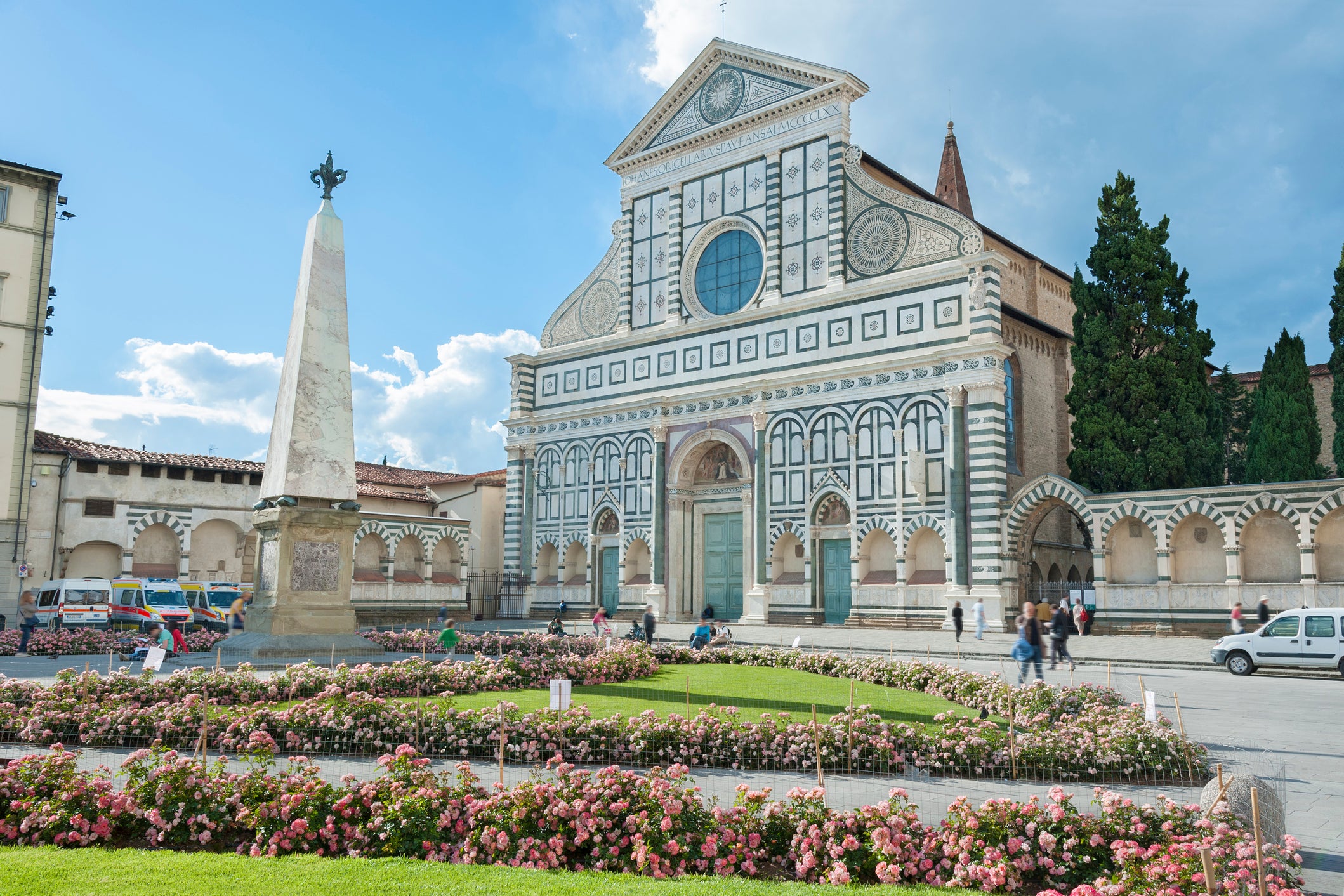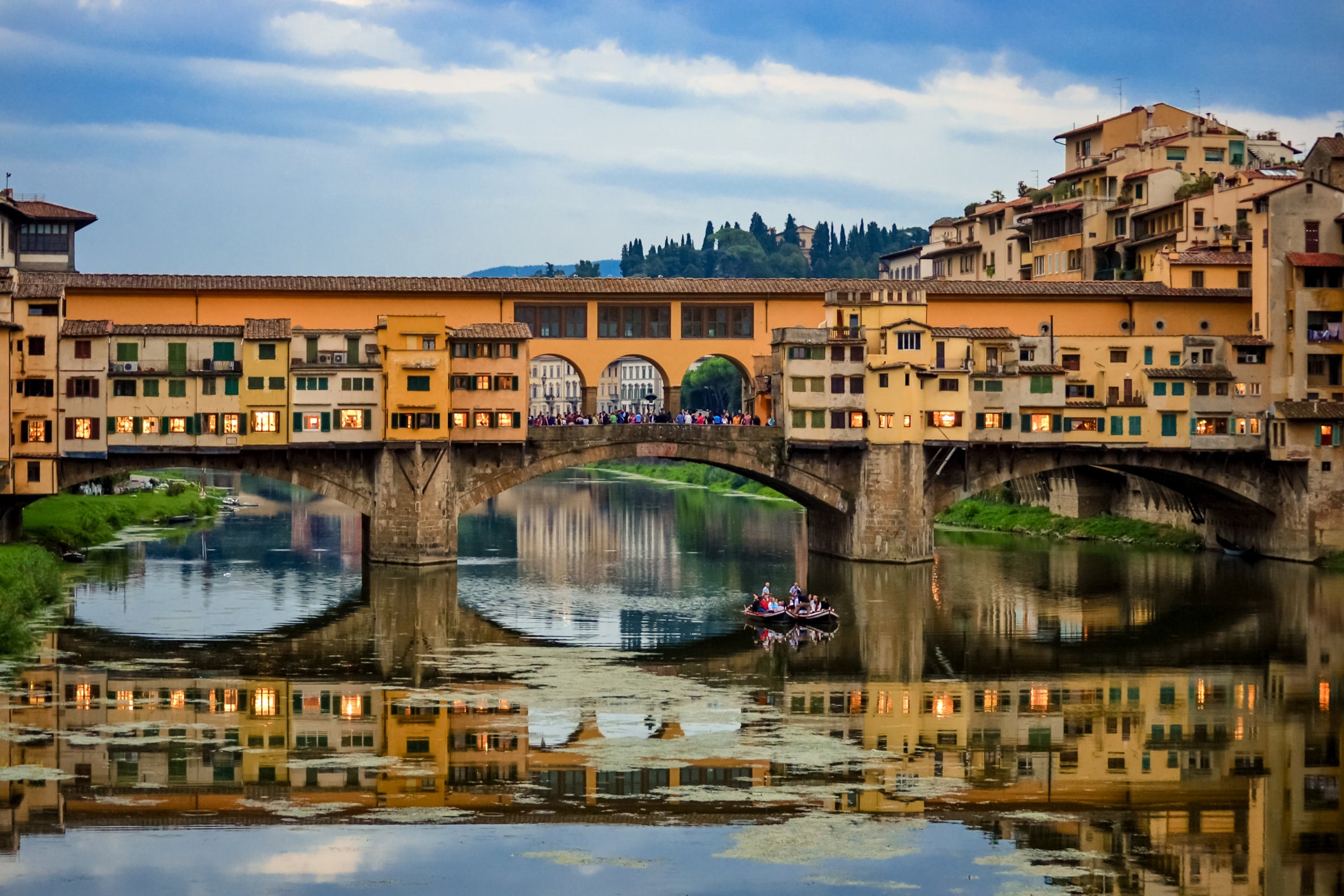
I awoke in Florence to a dawn chorus. Hundreds of sparrows were swooping and melody-making outside the window. I drew back the heavy damask silk curtains to reveal the view: the sparkling Arno river threading its sapphire path through the city.
To my left, the medieval buildings of the Ponte Vecchio bridge sat at incongruous angles, while beyond the river, the Tuscan hills were shrouded in early morning haze and tinged with a golden light. The scene was a painting come to life, and I understood then why artists throughout history have been drawn to Florence, the Italian city known as the birthplace of the Renaissance.
Read now: The best hotels in Florence

It helped that I was staying at The St. Regis Florence, something of a Renaissance palace itself, with gold-leaf decorating the public spaces, antiques, sculpture and rich fabrics found in every corner. Along with, of course, several incredible frescoes.
I was in the city to test out a new tour, “The Art of Frescoes in Florence”, designed by art historian and author Olimpia Isidori and launched by the hotel in collaboration with a local tour guide extraordinaire. It was my first visit to the city, and that June morning, I was eager to get out into it.
I met with my guide in the hotel lobby and, over strong Italian coffee, she explained how Florentine artists of the 14th century used the city’s church walls as blank canvases to tell stories of life in the city and of faith. “Fresco”, meaning “fresh” or “wet”, refers to the method of painting directly onto freshly applied plaster. Sort of an original graffiti in its way, the works seen around Florence today are incredibly well-preserved historical artefacts by now-famous artists such as Botticelli, Fra Angelico, Giotto, Masaccio and Masolino.

Our two-hour walking tour would lead us through the city to visit four churches and palazzos. The tours are customisable and are part of the rate for guests staying in one of the hotel suites.
First up, Chiesa di San Salvatore in Ognissanti, located on the same picturesque cobbled square as the hotel. The church houses the remains of the Vespucci family, whose 15th-century explorer son, Amerigo Vespucci, crossed the channel to the Americas. The church is most famous for its frescos depicting two navigators and philosophers, Saint Jerome in his Study and Saint Augustine in his Study, whose animated eyes stared down at me as I gazed around the cavernous space. Had I not been with Olimpia and my guide, I would have probably mistaken these for modern works; they were almost too vibrant and dynamic to be over 600 years old.
It turns out that this sense of movement and perspective was a breakthrough for fresco artists of the time, who introduced the concept of perspective in painting. Inside the Basilica di Santa Maria Novella, Masaccio’s The Holy Trinity, with the Virgin and Saint John and donours is one of the first works to introduce the concept. The artist reportedly pinned a piece of string to the centre of the artwork to create a vanishing point, which is a technique still widely used by modern artists.

Inside the Palazzo Medici Riccardi, a once private home of Florence’s famous namesake family was a private chapel of frescos that depicts the three kings’ journey to Bethlehem to visit the newborn Christ. The colours used – likely precious stones and gold ground up to make a paste – were still so bright you’d think it was painted yesterday. No expenses were spared in the creation of the chapel for Florence’s most powerful family, whose rags-to-riches story is one every Florentine knows well.
Read now: 7 of the best small towns and villages to visit in Tuscany
The Medicis were famous textile merchants and then bankers, but they were also philanthropists and teachers, and the Palazzo Medici Riccardi was used as the training ground for several fresco apprentices, including Michelangelo (who went on to paint the Cistine Chapel in Rome in 1508) and Leonardo di Vinci, both of whom were plucked from obscurity.
There are around 100 churches in Florence, including the cathedral and its famous duomo, which can be seen from almost anywhere in the city, though the best view is arguably from Piazzale Michelangelo, where you can capture the most picture-perfect view of the city and its rooftops and alleys from the southern banks of the Arno.
After a day on our feet, we’d reserved a table at Osteria del Cinghiale Bianco, one of the city’s best-loved trattorias, where a hearty stew of wild boar ragu was served over pappardelle (no cheese, as per the waiter’s strict instructions).

Read now: The best luxury hotels in Rome
On the way home, we stopped at Babae, one of Florence’s now-famous wine windows. Once used by locals to top up their wine supply, they are the original zero-waste refill stores. Since Stanley Tucci made these windows famous in his Searching for Italy series for Amazon Prime, they have become tourist attractions, with queues to match. Yet the novelty of ordering a (organic and very good) wine from a tiny window in the wall was worth the wait.
Before our midday flight the next morning, we crossed the Arno via Ponte Vecchio to soak up the atmosphere at one of the most touristy spots in the city. We gazed up at the crumbling medieval buildings, trying to imagine it during the Renaissance period without the souvenir shops and gold boutiques of today.
We weaved our way through the throngs to peaceful Boboli Gardens, a sprawling site that boasts an impressive collection of sculptures and a famous cypress-lined avenue. After visiting the gardens we grabbed an early lunch of lampredotto, a famous Florentine sandwich of slow-cooked tripe served in a focaccia sandwich, which I was surprised to find tasted quite delicate and not at all as rich and fatty as I’d anticipated; the meat infused with aromatic pepper spice.

Although short, our weekend break perfectly captured the high and low-brow elements of the city. Foods rich in flavour and fat, invented for the city’s poor classes, and the even richer tapestry of art, fresco and architecture created for the city’s wealthy elite, and now available for anyone to see, so long as they know where to look for it.
Emilee Tombs was a guest of The St. Regis, Florence.
How to get there
Vueling and British Airways fly direct to Florence from London, while Ryanair and easJet fly from London to Pisa and from Pisa you can hop on a train to Florence for around £8.50 one-way which takes between one- and one-and-a-half hours.
Book a tour
The “The Art of Frescoes in Florence” is a special tour created for guests staying in suites at The St. Regis Florence. If you are not staying at the hotel, the churches and palazzos are all accessible (some for a small fee), but you would miss out on the expert knowledge of the St. Regis Florence guides.
Where to stay
The St. Regis Florence is one of the city’s grand dame hotels, set on the northern bank of the River Arno.
25hours Hotel Florence Piazza San Paolino is a budget-friendly alternative, also located on the banks of the River Arno.







